Agadir’s Hidden Depths – More Than Just Golden Sands
Agadir morocco. The name instantly conjures images of sun-drenched shores, endless golden sands stretching along a gentle Atlantic bay, and lazy days spent soaking up the Moroccan sunshine. And while Agadir’s magnificent beach is undoubtedly its star attraction and a primary reason many visitors flock here, focusing solely on the shoreline means missing out on a wealth of diverse, engaging, and culturally rich experiences this resilient city and its stunning surroundings have to offer.
If you’re looking to dive deeper, to explore the pulse of local life, uncover historical layers, witness breathtaking natural beauty, and embark on unique adventures, then this guide is for you. We’re venturing beyond the beach to reveal the top things to do in Agadir that showcase its multifaceted personality. From the panoramic heights of its historic Kasbah and the bustling labyrinth of its central souk to lush mountain oases, unique wildlife encounters, and gateways to legendary surf spots and imperial cities, Agadir serves as a fantastic base for exploration.
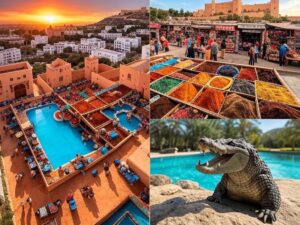
Top Things to Do in Agadir morocco Besides the Beach
Get ready to discover the historical heart, the cultural soul, and the adventurous spirit of Agadir. Let’s explore the exciting world that awaits just steps away from the sun loungers!
1. Step Back in Time: The Kasbah Agadir Oufella
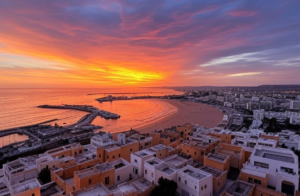
The Kasbah Agadir Oufella
Dominating the city skyline from its hilltop perch, the Kasbah Agadir Oufella (meaning ‘Agadir on the hill’) is the city’s most poignant historical landmark and an absolute must-visit, offering far more than just ruins.
-
A Glimpse into History: This was the original heart of Agadir, a bustling fortified town teeming with life before the devastating earthquake of February 29, 1960. The quake tragically reduced the vibrant Kasbah to rubble in mere seconds, claiming thousands of lives. Visiting the site is a moment to reflect on Agadir’s past resilience and its rebirth.
-
The Remaining Walls: While the interior structures are gone, the imposing fortified walls largely withstood the quake. Above the entrance archway, you can still see the Dutch inscription “Vreest God ende eert den Kooning” (Fear God and Honour the King), dating back to 1746, a reminder of historical trade relations. The Arabic inscription “God, Country, King” is also prominently displayed.
-
The Unbeatable Panoramic View: The primary reason visitors make the ascent today is for the absolutely breathtaking panoramic views. From here, you gain a sweeping perspective over the entirety of modern Agadir, the vast curve of the bay, the bustling port, the endless Atlantic Ocean, and the distant Anti-Atlas Mountains. It’s arguably the best viewpoint in the city, especially captivating at sunset as the city lights begin to twinkle below and the sky explodes with colour.

Panoramic sunset view over Agadir city and bay from the historic Kasbah Agadir Oufella
-
Getting There: The easiest way is by petit taxi – negotiate the price for a return trip, including waiting time (perhaps 30-45 minutes is sufficient for exploring and photos). You can also hike up the winding road, but be prepared, especially in the heat (bring water!). Organised city tours often include a stop here.
-
Visitor Tips: Be mindful of the site’s tragic history and visit respectfully. Be prepared for vendors at the top; a polite “La, shukran” (No, thank you) usually works. There isn’t much shade, so wear a hat and sunscreen.
2. Immerse Yourself in the Sensory Feast: Souk El Had
No trip to Morocco feels complete without the vibrant, chaotic, and utterly captivating experience of a traditional market, and Souk El Had in Agadir is one of the largest and most authentic in the region. Forget the beachfront souvenir stalls; this is where locals shop, and it offers an incredible insight into daily Moroccan life.
-
A Labyrinth of Discovery: Prepare your senses for an explosion of colours, sounds, and smells. Wander through seemingly endless alleys packed with stalls selling practically everything imaginable. Mountains of fragrant spices (cumin, turmeric, saffron, ras el hanout), colourful pyramids of olives and preserved lemons, stalls overflowing with fresh dates, nuts, and dried fruits. Discover gleaming tagine pots, intricate lanterns, hand-woven Berber carpets, vibrant textiles, traditional djellabas and kaftans, leather goods (bags, belts, babouche slippers), argan oil products, fresh produce, butchers’ stalls, and lively fish sections.
-
The Art of Haggling: Bargaining is expected for most non-food items and is part of the cultural interaction. Approach it with a smile and good humour. The initial price quoted is just a starting point. Decide what you’re willing to pay, offer significantly lower (maybe 40-50% of the asking price), and negotiate respectfully. Be prepared to walk away – sometimes this prompts a final, better offer. If an item has a fixed price (prix fixe), haggling is generally not appropriate.
-
Navigating the Maze: While vast, the souk is roughly organised by product type (e.g., spices, leather, crafts, furniture, clothing, food). Getting lost is part of the fun, but pay attention to gate numbers (entrances) to help find your way back. Allow at least 2-3 hours to explore properly without rushing.
-
Practical Tips: Go with plenty of small denomination Dirhams. Wear comfortable shoes. Be mindful of your belongings in crowded areas. If buying argan oil, look for certified women’s cooperatives for better quality assurance (some stalls within the souk represent these). Don’t be afraid to sample olives or dates if offered. Enjoy a refreshing mint tea at one of the small cafes inside for a break.
-
Getting There: Souk El Had is located slightly inland from the main tourist zone. A petit taxi is the easiest way (agree on the price or ensure the meter is on). Local buses also run nearby. It’s typically closed on Mondays.
3. Discover Artistic Craftsmanship: Medina Polizzi (La Médina d’Agadir)
For a calmer, more curated cultural and shopping experience, head to Medina Polizzi. This isn’t an ancient medina but rather a stunning modern recreation, conceived and built by Italian architect Coco Polizzi using traditional Moroccan materials and artisan techniques after the 1960 earthquake destroyed the original medina within the Kasbah.
-
Architectural Beauty: Wander through beautifully crafted lanes, squares, and riads adorned with intricate zellige tilework, carved cedarwood, tadelakt plaster finishes, and elegant archways. It’s a peaceful and aesthetically pleasing environment, showcasing the best of Moroccan architectural crafts.
-
Artisan Workshops: The primary draw here is the collection of high-quality artisan workshops. You can often watch craftspeople meticulously working on jewellery, metalwork, woodwork, weaving, and other traditional crafts. It’s an excellent place to buy authentic, often fixed-price souvenirs and handicrafts directly from the makers, generally of higher quality than many items found in more tourist-focused souks.
-
Relaxed Atmosphere: Unlike the hustle and bustle of Souk El Had, Medina Polizzi offers a serene and unhurried experience. There’s an entrance fee, which contributes to its upkeep and maintains the tranquil atmosphere. There are also cafes and restaurants within the complex.
-
Getting There: Located a few kilometres outside the city centre, Medina Polizzi is best reached by petit taxi.
4. Uncover Local Heritage: Amazigh Heritage Museum (Musée du Patrimoine Amazigh)
To understand the cultural roots of Agadir and the surrounding Souss-Massa region, a visit to the Amazigh Heritage Museum is highly recommended. Located conveniently in the city centre, this museum is dedicated to the rich culture and traditions of the Amazigh (Berber) people, the indigenous inhabitants of North Africa.
-
Cultural Treasures: Though relatively small, the museum houses a fascinating collection of artifacts. Admire intricate silver jewellery (a hallmark of Amazigh craftsmanship), colourful hand-woven carpets with traditional motifs, pottery, traditional clothing, musical instruments, ornate daggers, and everyday objects that offer insight into the Amazigh way of life.
-
Context and Understanding: The exhibits, often with explanations in French and sometimes English, provide valuable context to the region’s identity beyond its modern resort facade. It’s an enriching experience for anyone interested in Moroccan history and culture. Allow about an hour for a meaningful visit.
5. Escape to an Oasis: Paradise Valley
One of the most popular excursions from Agadir, Paradise Valley offers a stunning natural escape into the foothills of the High Atlas Mountains, revealing a landscape dramatically different from the coast.
-
Natural Beauty: Follow the winding Tamraght River valley through gorges dotted with palm groves. The main attraction is the series of natural rock pools and small waterfalls (water levels vary significantly depending on the season and rainfall). The turquoise pools, surrounded by dramatic rock formations and lush vegetation, create a picturesque oasis.
-
Activities: Hike along the paths exploring the valley, take a refreshing (often cold!) dip in the natural pools, dare a jump from designated cliff spots (always check water depth and safety first!), or simply relax at one of the simple riverside cafes enjoying a tagine or mint tea amidst the natural beauty.
-
Getting There: Located about a 60-minute drive from Agadir. Options include hiring a grand taxi for a half-day trip (negotiate the price firmly), joining an organized tour (often includes a stop at an Argan oil cooperative), or renting a car if you’re comfortable with mountain roads. The final access involves a walk/hike from the parking area.
-
Best Time to Visit: Spring (March-May) often offers the best water levels and greenest scenery. It can become very crowded, especially during weekends and holidays. In late summer or during dry spells, the pools can be very low or even dry. Check recent conditions if swimming is your main goal.
6. Encounter Gentle Giants: Crocoparc
A unique and well-maintained attraction just outside Agadir, Crocoparc is a guaranteed hit, especially for families, but fascinating for all ages.
-
Crocodile Haven: The park is home to over 300 Nile crocodiles, thriving in large, beautifully landscaped enclosures designed to mimic their natural habitat. Watch these prehistoric reptiles basking in the sun, gliding through the water, or congregating near the banks. Check feeding times for extra excitement.
-
Botanical Gardens: Beyond the crocs, the park boasts impressive botanical gardens featuring a diverse collection of tropical and exotic plants, succulents, cacti, water lilies, and bamboo groves, making it a pleasant place for a stroll.
-
Facilities: Includes educational displays about crocodiles and conservation, rest areas, a cafe/restaurant, and a children’s playground.
-
Getting There: Located about 15-20 minutes drive from Agadir city centre, near the turn-off for the airport. Easily reachable by petit taxi or included in some tour itineraries.
7. Explore the Coast’s Wild Side: Souss-Massa National Park
Stretching south of Agadir, this expansive national park encompasses diverse habitats, including wetlands, steppe, dunes, and cliffs along the Oued Massa (Massa River) estuary. It’s a vital sanctuary for birdlife.
-
Birdwatcher’s Paradise: The park is internationally renowned as the home of the last viable wild population of the Northern Bald Ibis, a critically endangered and fascinating bird. It’s also a hotspot for observing numerous other resident and migratory species, including flamingos, spoonbills, ospreys, sandpipers, gulls, terns, and various ducks and warblers.
-
Visiting the Park: Access to the prime birdwatching areas, particularly around the Massa estuary, is best arranged through guided tours, often using 4×4 vehicles. Knowledgeable guides can help you spot wildlife and navigate the park effectively. Independent visits can be challenging. Book through reputable eco-tour operators in Agadir.
-
Best Time for Birding: Migration seasons (spring: March-May, autumn: September-November) and winter (December-February) are typically the most rewarding periods.
8. Catch a Wave (or Watch the Pros): Taghazout & Beyond
While this guide focuses on non-beach lounging, the activity of surfing and the unique culture surrounding it definitely qualify as something incredible to do besides just lying on Agadir’s main beach. Agadir is the gateway to Morocco’s legendary surf coast.
-
Taghazout Village: Just north of Agadir, this world-famous surf village pulsates with a laid-back, bohemian energy. Even if you don’t surf, visiting Taghazout offers a different coastal vibe – browse surf shops, relax in beachfront cafes watching surfers ride famous breaks like Anchor Point or Panorama, or soak in the alternative atmosphere.
-
Try a Surf Lesson: If you’re curious, the nearby spots like Tamraght (Banana Point, Devil’s Rock) offer great conditions for beginners and intermediates. Numerous surf schools provide lessons and rentals.
-
Journey to Imsouane: For a truly unique experience, consider a day trip (or overnight stay) further north to Imsouane. This charming fishing village boasts ‘The Bay’, home to one of Africa’s longest rideable waves – perfect for longboarders and beginners. The vibe is even more remote and relaxed than Taghazout. Discover more about this surf haven imsouane .
9. Indulge Your Taste Buds: Culinary Exploration
Experiencing Agadir beyond the beach absolutely includes diving into its delicious food scene.
-
Taste Traditional Tagines & Couscous: Seek out local restaurants away from the main tourist strip for authentic flavours. Try lamb tagine with prunes and almonds, chicken tagine with preserved lemons, or a hearty vegetable couscous.
-
Savour Fresh Seafood: While beach restaurants offer convenience, consider visiting the fishing port area (choose cleaner-looking establishments) or reputable city restaurants for incredibly fresh grilled fish, calamari, and shrimp, often at great prices.
-
Explore Souk El Had Snacks: Be adventurous in the souk and try local breads, pastries, olives, dates, or grilled meats from trusted vendors.
-
Take a Cooking Class: Several operators offer Moroccan cooking classes, a fantastic hands-on way to learn about the ingredients and techniques behind famous dishes, often including a trip to the market first.
10. Venture Further: Exciting Day Trips
Agadir’s location makes it a great launchpad for exploring other fascinating Moroccan destinations, offering experiences far removed from the beach resort feel.
-
Essaouira’s Artsy Coastal Charm: (Approx. 3 hours north) This beautiful, windswept city offers a completely different coastal experience. Explore its UNESCO-listed medina with blue-shuttered white houses, walk along the historic ramparts (Skala de la Ville), visit the bustling fishing port, browse numerous art galleries, and soak in the laid-back, artistic vibe. It’s a hub for Gnaoua music and known for its strong winds, making it popular for windsurfing and kitesurfing. Plan your Essaouira excursion with insights from Essaouira . Buses (Supratours/CTM) offer comfortable travel.
-
Marrakech’s Imperial Buzz: (Approx. 3-4 hours inland) For a complete change of pace, immerse yourself in the intoxicating energy of Marrakech. Explore the legendary Djemaa el-Fna square with its snake charmers and food stalls, get lost in the vast souks, visit stunning palaces (Bahia, El Badi), admire the Koutoubia Mosque, and find tranquility in the Jardin Majorelle. While a long day trip is possible (best via organized tour or early bus), an overnight stay is highly recommended to truly experience the ‘Red City’. For itinerary ideas, check marrakech
-
Taroudant (Little Marrakech): (Approx. 1.5 hours inland) Explore this charming walled city often called “Grandmother of Marrakech.” Walk along its impressive ramparts, explore its less chaotic souks specializing in leather and silver, and enjoy a more traditional, less touristy market town atmosphere.
Practical Considerations for Exploring Beyond the Beach
-
Getting Around: Petit taxis are great for city trips (Kasbah, Souk, Museum, Medina Polizzi). Grand taxis or buses are needed for Taghazout/Paradise Valley. Buses (CTM/Supratours) or organized tours are best for Essaouira/Marrakech.
-
Dress Code: When visiting cultural sites like the Souk, Kasbah, museums, or venturing into local neighbourhoods or inland towns, dressing modestly is respectful. Cover shoulders and knees (applies to both men and women). Loose, lightweight clothing is ideal.
-
Best Time for Sightseeing: Shoulder seasons (Spring: March-May, Autumn: September-November) offer pleasant temperatures for exploring. Summer can be very hot, especially for inland trips or climbing the Kasbah. Winter is mild but might have occasional rain.
Conclusion: Agadir’s Rich Tapestry Awaits
While the call of Agadir’s magnificent beach is strong and undeniable, venturing beyond the sand reveals a destination brimming with history, culture, nature, and adventure. From the breathtaking views atop the historic Kasbah and the vibrant chaos of Souk El Had to the tranquil beauty of Paradise Valley, the unique encounters at Crocoparc, and the gateways to legendary surf spots like Imsouane , Agadir offers a truly diverse holiday experience.
Use the city as your base to explore further afield, perhaps discovering the artistic allure of Essaouira or the imperial grandeur of Marrakech .
So, tear yourself away from the sun lounger for a while. Embrace the opportunity to explore, taste, learn, and connect with the multifaceted spirit of Agadir and its surroundings. You’ll find that the experiences waiting just beyond the beach are every bit as rewarding, leaving you with richer memories of your Moroccan adventure.

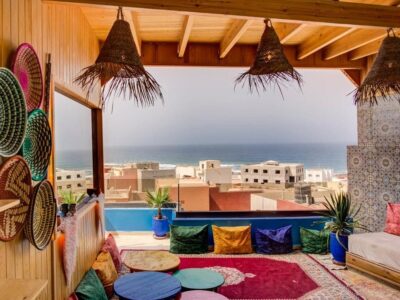
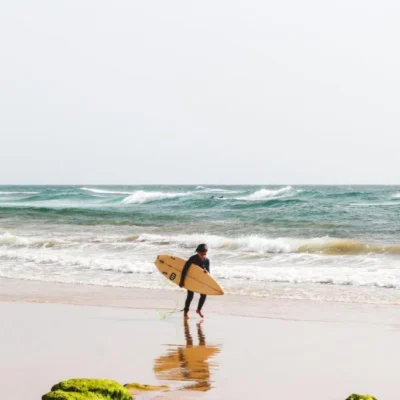
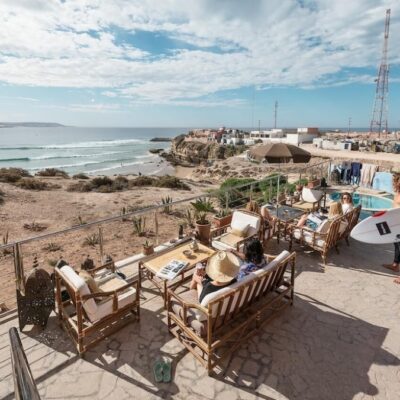
Comments